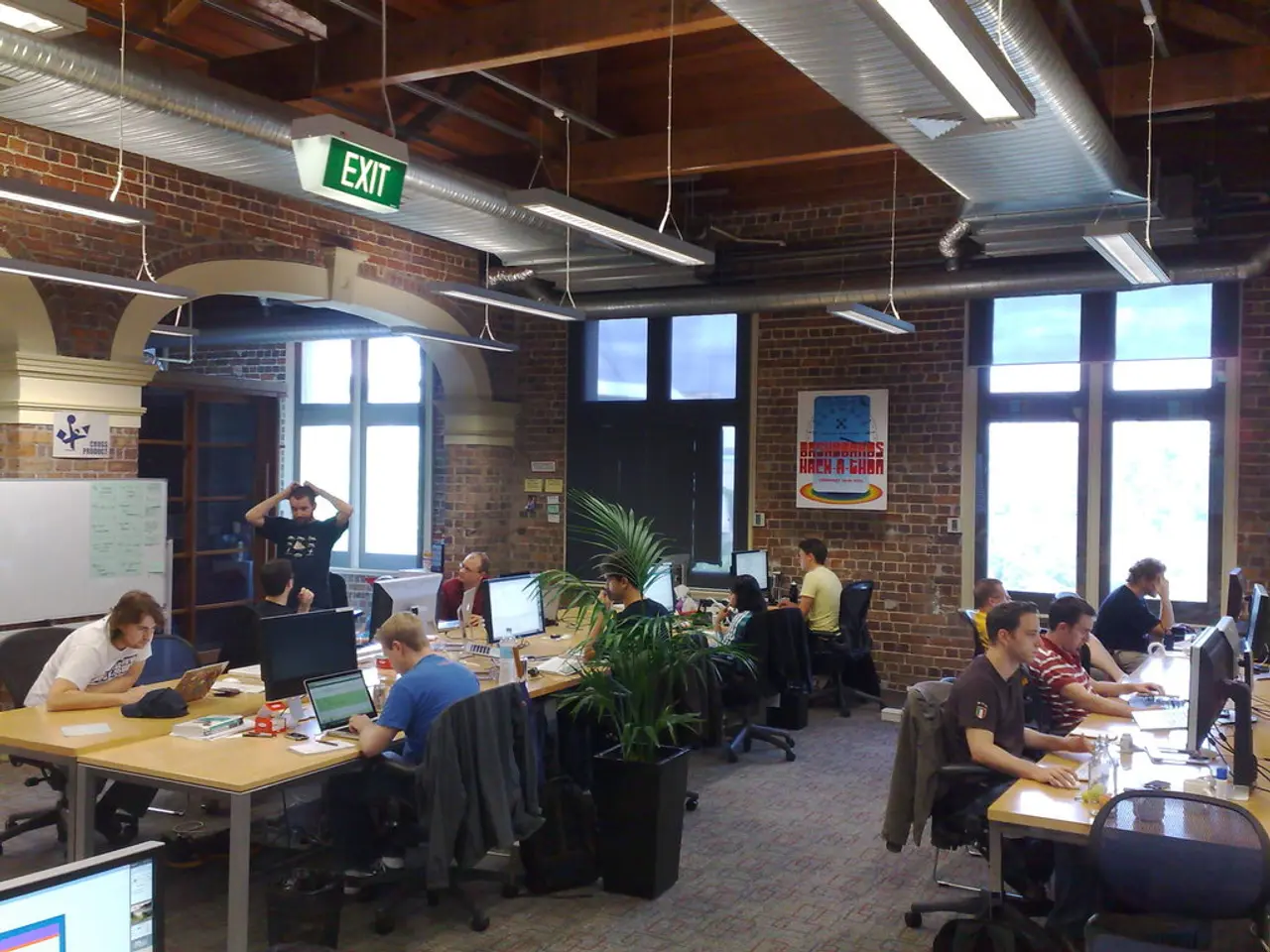Embracing Biophilic Design: A Look into Architectural Firms' Offices
Harnessing Biophilia in Work Spaces and Conducting Meetings and Retreats in Nature Environments
In the realm of architecture and design, practices like Project Orange, Knox Bhavan, ECD Architects, Assemble, Studio Bark, Exploration Architecture, Architype, Haworth Tompkins, and Human Nature are harnessing biophilia - the human connection to nature - to transform the office experience.
Co-evolving with Nature
The concept of co-evolving with nature recognizes our integral link to the natural world and the importance of regenerating ecosystems through design. By focusing on circularity and closed-loop energy, material, and water cycles, these architectural firms are aligning their practices with this essential ecological harmony.
Biophilic Design in Action
Let's take a closer look at how these practices incorporate biophilic design within their offices and regular events:
Studio Bark, with extensive planting and opportunities for remote work in a natural setting, emphasizes access to green spaces and outdoor socialization as key components of their office environment.
Exploration Architecture designs workspaces based on biophilic principles, taking employees on occasional 'walking meetings' in natural settings to promote physical and mental well-being.
Project Orange brings nature indoors through clad interiors, a garden studio, and a focus on composting waste. Their annual retreats offer chances to immerse themselves in nature, boosting productivity and team bonding.
Architype creates spaces that mirror nature through natural materials, indoor planting, and green-focused studio spaces. They support regular breaks and team bonding activities to reinforce their commitment to nature.
Knox Bhavan fosters an inviting, serene workspace that features flexible, natural materials, lush greenery, and a tranquil garden oasis.
ECD Architects organizes annual office walks and encourages communal plant care to promote emotional connections with nature and encourage well-being.
Assemble hosts annual summits in rural locations to reconnect with nature and foster collaboration among employees.
Human Nature is situated within the South Downs National Park and organizes monthly team walks, which encourage both mental and physical well-being among employees.
Through the strategic use of natural materials, plant life, color psychology, sensory and emotional engagement, flexible layouts, and a dedication to mental health, these firms are redefining the office space as a human-centered, emotionally supportive, and engaging environment that strengthens the connection between humans and nature. Such design strategies enhance employees' experiences, boosting well-being and creativity, while promoting ecological awareness and sustainability.
[1] Color Psychology in Interior Design | Insights from Hospitality Experts[2] Biophilic Design and Mental Health: The Connection Between Nature and Emotional Well-Being[3] Biophilic Design in Architecture: Benefits and Strategies for Sustainable Workplaces[4] How Biophilic Design Enhances Employee Well-Being and Boosts Productivity[5] The Elements of Biophilic Design: Tips and Examples for Creating Sustainable, Healthy Spaces
- In reinforcement of these practices, a growing emphasis on health and wellness is evident within these architectural firms, as they strive to create workplaces that promote fitness and exercise for their employees.
- The incorporation of home and garden elements, such as indoor plants, vegetable patches, and composting systems, contributes to the lifestyle of 'sustainable living', integrating the environment and climate-change awareness into their office culture.
- Furthermore, these firms extend their focus on health and wellness beyond the workplace, engaging in home-and-garden activities like gardening and advocating for environmentally-friendly food choices to foster overall employee health and well-being.
- Environmental-science principles and practices play a crucial role in the implementation of biophilic design, as these architectural firms collaborate with scientists to optimize the placement of natural elements and maximize their positive effects on human health.
- As a result, lifestyle improvements through health-and-wellness, fitness-and-exercise, and environmental-science, along with the promotion of sustainable living, represent key components in transforming the office environment and strengthening the human-nature connection.
- In essence, these biophilic design practices in architectural firms are not just a design fad but a holistic approach that address various aspects of human life while promoting collaboration, productivity, and ecological awareness, thereby setting a new standard for workplace wellness and sustainable development.








